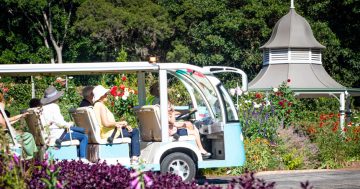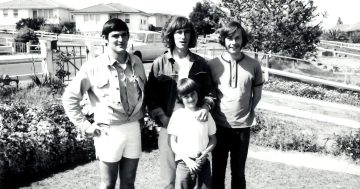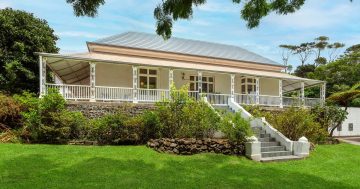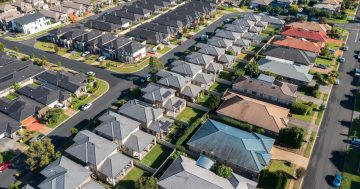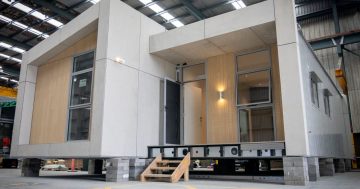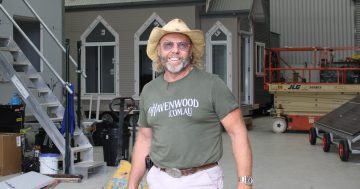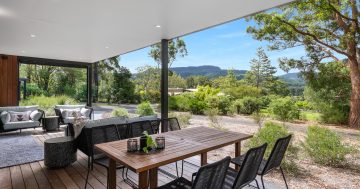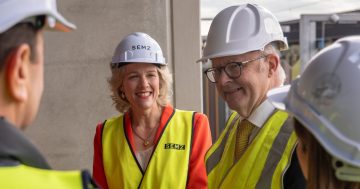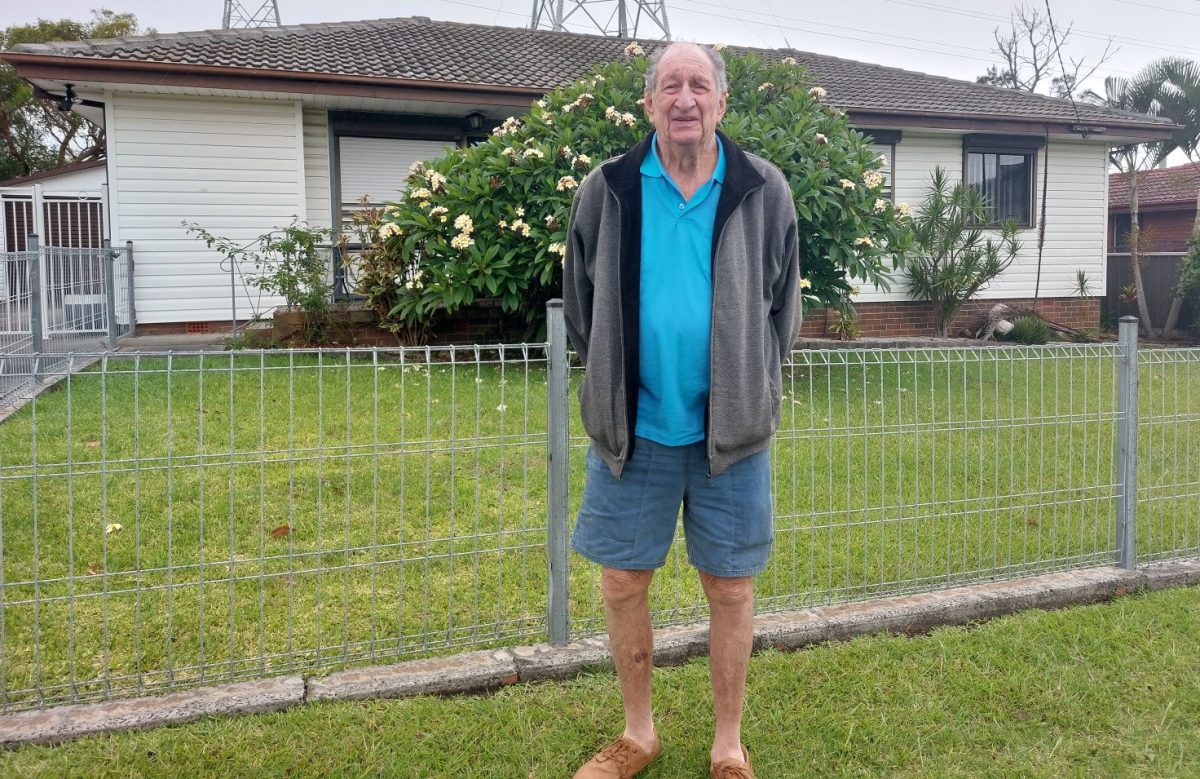
Neil Kirkwood in front of the first home built in the Koonawarra housing estate. Photo: Michele Tydd.
Retired Illawarra builder Neil Kirkwood constructed thousands of homes in his long career, but one holds special significance.
It is this three-bedroom cladded fibro home in Gilba Road, Koonawarra, which was the first dwelling built on what would become a sprawling Housing Commission estate in 1965.
Koonawarra followed Berkeley and Warilla’s lead at a time when housing was needed for low-income earners.
When Neil, now tipping 80, went searching for it recently, the memories came flooding back.
“I’d just finished my apprenticeship in ’65, and I’d joined up with my older brother Ken and another builder, Max Ingold, who had been subcontracted by the NSW Housing Commission to work on the estate,” he explains.
“When we turned up on the first day it was just cleared farming land for kilometres,” he recalls.
Koonawarra, wedged between Dapto and Kanahooka, was settled in 1816 when Richard Brooks was granted 1300 acres. It was then known as Exmouth, but later reverted to Koonawarra, the name given by the local Indigenous population, according to Wollongong City Council records.
“It was so isolated my mother used to pack my lunch every day because the closest thing to a cafe or shop was Cito’s (Dapto Citizens Bowling Club) over a kilometre away,” says Neil.
“Ken was married by then so his wife would do the same.”
With three working men thrown together for eight or nine hours a day, it had its moments.
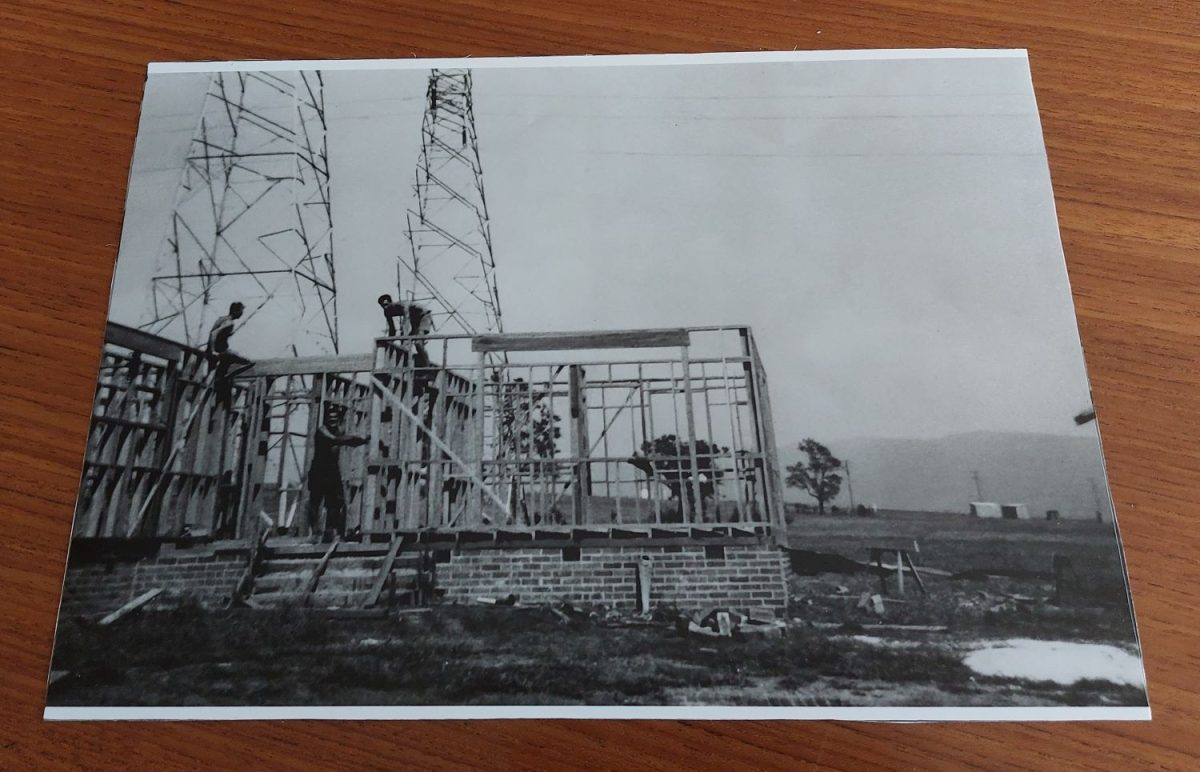
Neil was just out of his apprenticeship when he started building homes at Koonawarra, starting with this one in Gilba Road. Photo: Michele Tydd.
“Yeah, Ken and I used to argue a bit sometimes, usually about how to do things – and sometimes it would end in a physical fight,” Neil says with a laugh.
He also remembers how different the building industry was in the 60s and 70s.
There were no distractions like mobile phones or radios and Neil remembers that first house took only about six days to get to lock-up stage, which he says would be unheard of today.
“Back then we worked with hardwood straight from the sawmill. We had to cut the frame and roof on-site, not like today, which is all prefabricated,” he says.
“It’s sad for the present generation because if you gave them slabs of timber and said, ‘Go build a house’, nine out of 10 couldn’t do it.
“And because you can’t use hardwood anymore, these days it’s mainly pine, which is not as sturdy.
“I don’t call the younger generation builders; I call them assemblers.”
However, while pay was good (about $60 a week) there was no such thing as worker’s compensation, which badly impacted on Neil at age 37 when he fell from a tank on a job in Figtree that left him with seven fractures in his back and two cracked vertebrae.
“It knocked the cake out of me, but with no insurance, a wife, a mortgage and two children, I could only afford to take a fortnight off.”
Another health threat and one that was unbeknown to most workers like Neil was the threat of lung disease from asbestos which was in the fibro used on Housing Commission homes.
“Builders found if you cut the fibre outside, the breeze would blow the dust away,” says Neil.
“But if you did it inside then, of course, you swallowed it but it didn’t affect everybody.
“Ken has a few spots on his lungs but he’s now 87.”
When Neil pulled up at the neat address he assessed was the fruits of his labour 60 years ago, he cast an experienced eye over several features and proudly declared, “Yep, that’s it”.
But like his generation who are not given to too much sentimentality, he turned around for a quick picture and drove off, content in the knowledge it looked smart and well-kept.








